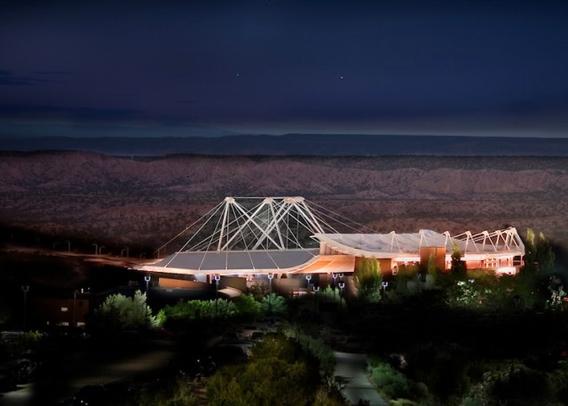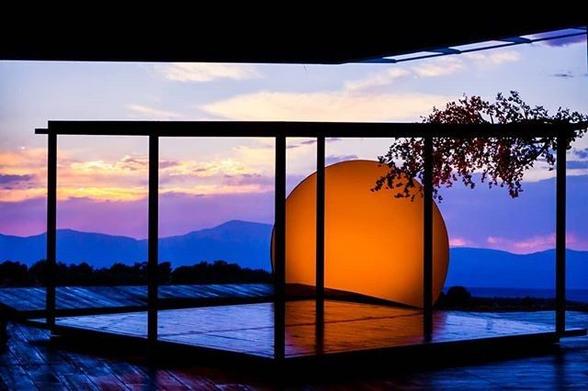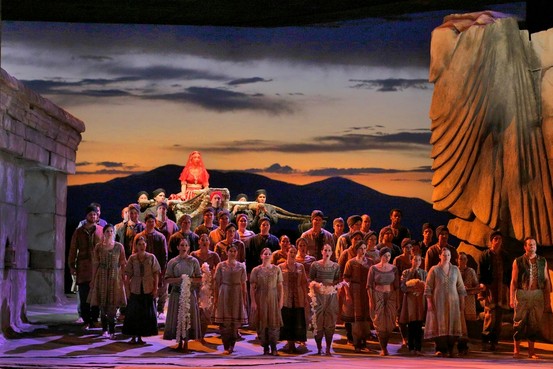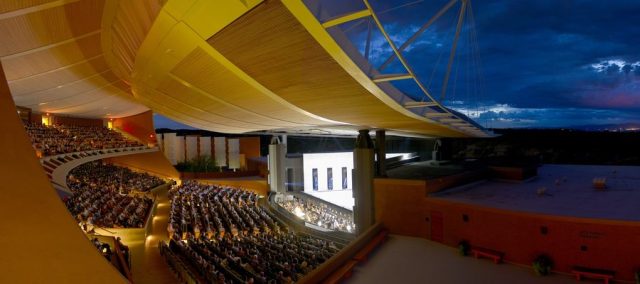Hà Nội dự kiến sẽ hỗ trợ tối đa 5 triệu đồng cho mỗi cá nhân khi đổi từ xe máy chạy xăng sang xe máy điện, nhằm thúc đẩy chuyển đổi giao thông xanh và giảm ô nhiễm môi trường. Đề xuất này nằm trong dự thảo Nghị quyết về chính sách hỗ trợ chuyển đổi phương tiện giao thông sử dụng năng lượng sạch trên địa bàn thành phố. Chương trình dự kiến áp dụng với các điều kiện cụ thể về xe cũ, xe mới và thủ tục đổi đổi để đảm bảo minh bạch và hiệu quả.
#Hanoi
🌬️ Miền Bắc chuẩn bị đón đợt không khí lạnh tăng cường gây rét khô toàn vùng. Nhiệt độ Hà Nội dự báo xuống 13°C - 15°C, vùng núi có nơi dưới 10°C. Nhớ giữ ấm!
#MiềnBắc #HàNội #ThờiTiết #KhôngKhíLạnh
#NorthernVietnam #Hanoi #Weather #ColdSpell
Dự báo thời tiết 24/11/2025: Miền Bắc sẽ đón không khí lạnh tăng cường, khu vực Đông Bắc và Bắc Trung Bộ chịu ảnh hưởng. Hà Nội sẽ không mưa, trời khô và rét, tiếp tục giảm nhiệt độ vào ngày 25/11. 🌬️❄️ #Weather #ThoiTiet #MiềnBắc #Hanoi #ColdWave #Vietnam #WeatherForecast #ThoiTiết #MienBac #HanoiRét
NONE
Tối 23/11, tại cầu Thanh Trì (Hà Nội), đã xảy ra một vụ tai nạn giao thông nghiêm trọng. Một ô tô khách mất lái đã va chạm với xe máy, khiến 2 người trên xe máy tử vong.
#tainạngiaothông #HàNội #cầuThanhTrì
#TrafficAccident #Hanoi #Vietnam
Vụ tai nạn giao thông nghiêm trọng vừa xảy ra trên cầu Thanh Trì, Hà Nội. Một ô tô khách đã mất lái, tông trực diện vào xe máy khiến 2 người đi xe máy tử vong tại chỗ. Sau cú va chạm, chiếc ô tô bốc cháy dữ dội.
#TaiNạnGiaoThông #HàNội #CầuThanhTrì #GiaoThông #TrafficAccident #Hanoi #Vietnam #TinTức #News
Chỉ 600m đường Nguyễn Cảnh Dị (Hà Nội) mà nát tươm như ruộng, chằng chịt ổ voi, ổ gà. Tình trạng mặt đường hư hỏng, lầy lội và bụi bặm khiến việc đi lại của người dân vô cùng khó khăn.
#HàNội #GiaoThông #ĐườngHỏng #XuốngCấp #NguyễnCảnhDị
#Hanoi #Traffic #Infrastructure #BadRoads #Vietnam
Giải Pickleball "Ước Mơ Xanh" 2025 đã chính thức khai mạc tại Cụm sân Pickleball Cầu Giấy, Hà Nội.
Giải đấu do Báo Nhà báo và Công luận tổ chức không chỉ lan tỏa tinh thần thể thao mà còn mang ý nghĩa nhân văn sâu sắc, hướng đến việc gây quỹ và chung tay hỗ trợ đồng bào vùng lũ tại miền Trung và Tây Nguyên.
#pickleball #ƯớcMơXanh #thethao #tuthien #HaNoi #MienTrung #TayNguyen
#Pickleball #Vietnam #Hanoi #charity #sports #tournament
https://vietnamnet.vn/giai-pickleball-uoc-mo-xanh-2025-huong-
Bản tin sáng 23/11 🇻🇳
Hà Nội: Một vụ tai nạn liên hoàn do ô tô tải gây ra trên đường Vành đai 3 trên cao, gây ùn tắc nghiêm trọng.
Tại xã Hoà Thịnh, một người đàn ông đã dũng cảm cứu sống hơn 40 người dân trong trận lũ dữ.
Thời tiết: Miền Bắc sắp đón đợt không khí lạnh mới, trong khi Trung Bộ tiếp tục có mưa dai dẳng.
#TinTức #ViệtNam #HàNội #TaiNạn #GiaoThông #LũLụt #ThờiTiết
#News #Vietnam #Hanoi #Accident #Traffic #Flood #WeatherForecast
Tiếng cồng chiêng Mường vang dội trên phố đi bộ hồ Hoàn Kiếm! 250 người trong 5 đội đã biểu diễn qua Hai Bà Trưng, Tràng Tiền, Đinh Tiên Hoàng và Hàng Dầu, mang lại không gian văn hóa dân tộc mới mẻ và quảng bá bản sắc Việt Nam. #Mường #CồngChiêng #HoànKiếm #VănHóaViệtNam #CulturalHeritage #Vietnam #Hanoi #TràngTiền #DânTộc #TônGiao
Một cặp vợ chồng ở Hà Nội đã chi 500 triệu đồng để "lột xác" cho căn hộ cũ đang xuống cấp nghiêm trọng. Đối mặt với tình trạng thấm tường và đường nước liên tục hỏng, họ đã biến không gian sống bất tiện thành một tổ ấm xinh xắn, tiện nghi và ấm cúng như homestay.
#cảitạonhà #nhàđẹp #thiếtkếnộithất #chungcư #HàNội
#homerenovation #interiordesign #apartmentliving #Hanoi #cozyhome
Hà Nội: Đêm 22/11, một vụ tai nạn giao thông liên hoàn giữa 5 ô tô đã xảy ra trên đường Vành đai 3 trên cao, đoạn qua phường Hoàng Mai. Vụ việc khiến 2 người bị thương phải đưa đi cấp cứu.
#HàNội #TaiNạnGiaoThông #VànhĐai3 #GiaoThông
#Hanoi #TrafficAccident #Vietnam #News
Homestay owner in Danang tried to push me around. I pushed back. Police came. I got a refund. Now I’m chilling in a Hanoi treehouse. Travel is wild. #TravelLife #DigitalNomad #AsiaTravel #Vietnam #DaNang #Hanoi #TravelStories #ArtistLife #CreativeMind #Exploration #PsychedelicPerspective #InnerJourney #ConsciousLiving #Awareness #SelfDiscovery #Presence #NoLabels #Fluidity #ArtistIdentity #CuriousMind #Unconventional https://whothefami.substack.com/p/rat-vui-gap-ban-nice-to-meet-you
Street food à Hanoï : à la découverte des trésors culinaires du Vietnam
Five Opera Houses that Blend Music and Nature
Sometimes when you see a handsome building designed and placed perfectly within a spectacular natural setting, it becomes a masterful work of art in itself. Provided below are images of five (5) opera houses located around the globe that do just that. Peace!
——-
SANTA FE OPERA HOUSE – Santa Fe, New Mexico (1998 – third structure on the site)
Set exquisitely on a mesa just to north of Santa Fe, New Mexico, the Santa Fe Opera House is an architectural jewel adorning the high desert. This performance venue is unique in that its annual opera series is held under an impressive open-air structure with a suspended roof. The surrounding natural vistas of the Jemez Mountains, arid desert, vast horizons, billowing clouds, and summer sunsets form an incredible backdrop to those performing on the stage.
The Santa Fe Opera is truly “a place where elegance meets wilderness” beneath majestic mountains, glorious skies, and shimmering stars.
Source: gscworldtravel.com Set of Madame Butterfly with the Jemez Mountains as backdrop – Source: pinterest.comJemez Mountains as backdrop – Source: wsj.com Source: santafeopera.org“The Santa Fe Opera is the only open-air opera house in the United States. Rebuilt three times, each successive structure has retained the footprint of the previous building. Defined as much by the surrounding high desert landscape as by programmatic requirements, the opera house has continued to offer a convincingly modern interpretation of New Mexico’s regional identity.”
Source: sah-archipedia.org
——-
SYDNEY OPERA HOUSE – Sydney, Australia (1973)
Set at the edge of Bennelong Point overlooking busy Sydney Harbour, the Sydney Opera House is often considered a modern masterpiece of architectural design. Its resemblance to sails fits perfectly with the many sailboats dotting the blue waters of the adjacent harbour. The opera house is so well known, that it’s the most recognizable building of Australia.
Source: architecturaldigest.comSource: archnewspaper.com“Utzon’s daring design idea was based on glistening white sculptural sails flying above a massive podium.”
Source: australiandesignreview.com
——-
ZHUHAI OPERA HOUSE – Zhuhai, China (2017)
A marvelous architectural design that celebrates Zhuhai’s pearl, oyster, and clam gathering heritage on an island where the Pearl River meets the sea. These two towering shell-shaped structures (named Sun and Moon) are simply breathtaking in this impressive setting.
Source: subsites.chinadaily.com.cn Source: architectureprize.com“Every day the dance-like convergence of the river and sea, the tide’s ebb and flow is a spectacular scene in which architecture needs to show awareness and sensitivity in responding to this vast natural environment and avoid interrupting it which took billions of years to build up. Therefore, the design incorporates a humble attitude in the face of the ocean and the earth and becomes an integral part of nature.”
Source: e-architect.com
——-
HANOI/WEST LAKE OPERA HOUSE – Hanoi, Vietnam (2027)
Literally floating in Hanoi’s West Lake, this opera house will meld music and water like no other structure. The following quote aptly summarizes the opera house’s relationship with the natural world.
Source: archdaily.com Source: parametric-architecture.com“Drawing inspiration from local natural forms, the rippling surface of West Lake, and the oyster shell, the building’s aesthetic takes shape as a cultural landmark of international stature and a symbol of Vietnam’s sustainable development. The striking floating structure, rising from the surface of West Lake, reinforces its contextual link to the natural and historical features of the West Lake environment.”
Source: parametric-architecture.com
——-
HAMBURG STATE OPERA HOUSE – Hamburg, Germany (proposed)
Another fine (future) example of siting an opera house in a perfect natural location. When the Hamburg State Opera House is completed, it will be nearly surrounded by the Elbe River when its new home is completed on a peninsula. As the quote below notes, the design will be at one with the abutting river.
Source: designboom.comSource: designboom.com“BIG Landscape’s design extends the opera’s design language into the surrounding park. Flood management is integrated through a system of terraces, planted dunes, and wetlands that absorb and slow water flow. Rain basins collect and filter runoff, creating habitats for local flora and fauna. This way, a resilient ecological zone is created which responds to the tides of the Elbe while framing the opera as a living landscape shaped by natural movement.”
Source: designboom.com
#cities #environment #geography #hamburg #hanoi #history #landUse #landscaping #music #opera #operaHouses #planning #santaFe #scenery #sydney #tourism #travel #zhuhai
Dự kiến tháng 12, dự án nhà ở xã hội tại khu đô thị mới Thanh Lâm - Đại Thịnh 2 (xã Quang Minh, Hà Nội) sẽ mở bán với giá khoảng 14,8 triệu đồng/m². Căn hộ 56m² có giá dưới 800 triệu đồng, hiện là mức giá thấp nhất tại Hà Nội. Dự án hướng đến đối tượng có thu nhập thấp, góp phần giảm áp lực nhà ở tại thủ đô.
#NhàỞXãHội #HàNội #BấtĐộngSản #AffordableHousing #Hanoi #RealEstate #CanHoGiaRe #NhàỞDânDụng
https://vietnamnet.vn/ha-noi-sap-mo-ban-can-ho-56m2-gia-hon-800-trieu-dong-2464835.html
Hai cháu bé trượt chân ngã xuống hố sâu ở khu vực núi Trầm, Hà Nội. Lực lượng cứu hộ đã vượt địa hình hiểm trở, triển khai nhanh chóng và đưa hai bé lên an toàn; sức khỏe ổn định. #Hanoi #HàNội #Rescue #CứuHộ #News #TinTức #Safety #AnToàn
https://vietnamnet.vn/hai-chau-be-roi-xuong-ho-sau-o-ha-noi-2464888.html
Tuần lễ Khoa học Công nghệ VinFuture 2025 sẽ chính thức diễn ra tại Hà Nội từ ngày 02 đến 06 tháng 12 năm 2025. Sự kiện là nơi hội tụ của những tinh hoa khoa học thế giới, hứa hẹn mở ra những hướng tiếp cận mới cho tương lai nhân loại.
#VinFuture #VinFuture2025 #KhoaHoc #CongNghe #SuKien #HaNoi #VietNam #Science #Technology #VinFuturePrize #Hanoi #Vietnam #SciTech
🚨 300 cảnh sát đã đột kích 3 quán karaoke biến tướng tại Hà Nội, phát hiện và thu giữ ma túy cùng 3 khẩu súng. Các quán này dù đã ngừng kinh doanh vẫn lén lút cung cấp chất cấm cho khách. #CảnhSát #MaTuỳ #SúngĐạn #Hanoi #Vietnam #PoliceOperation #DrugBust #Crime #KaraokeBust 🚔
Chính phủ ban hành quy định mới về số lượng Phó Chủ tịch UBND tại các địa phương. Cụ thể:
- **TPHCM**: có không quá 8 Phó Chủ tịch.
- **Hà Nội**: có không quá 5 Phó Chủ tịch.
- **Các tỉnh, thành khác**: có từ 3-7 Phó Chủ tịch.
#ViệtNam #chínhsách #tổchứcnhànước #HàNội #TPHCM #UBND #Vietnam #policy #government #Hanoi #HCMC #HoChiMinhCity



